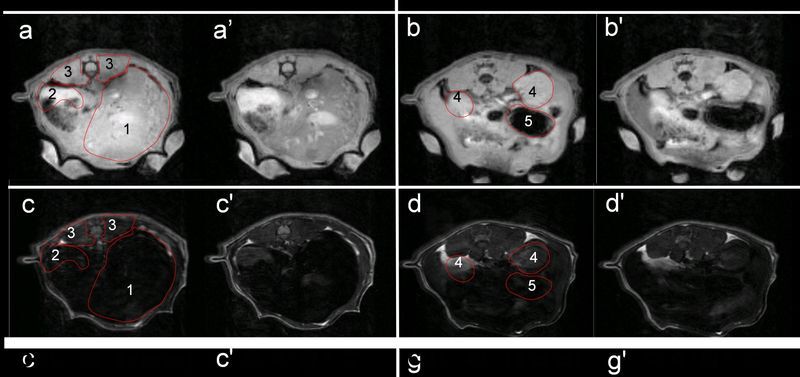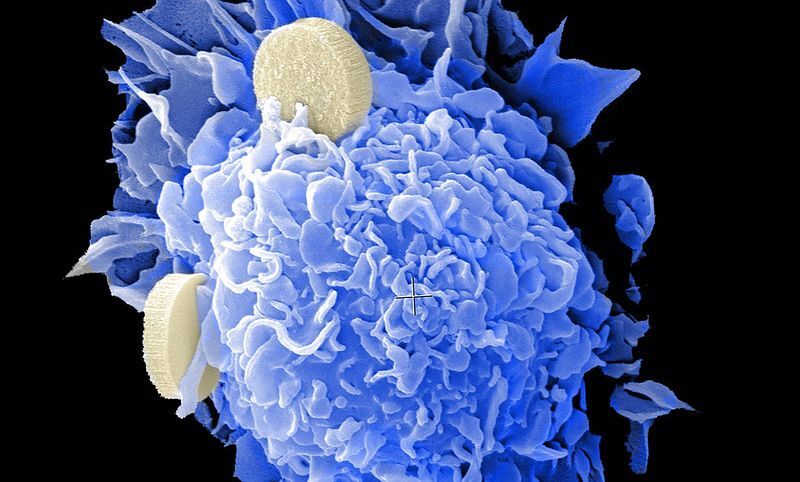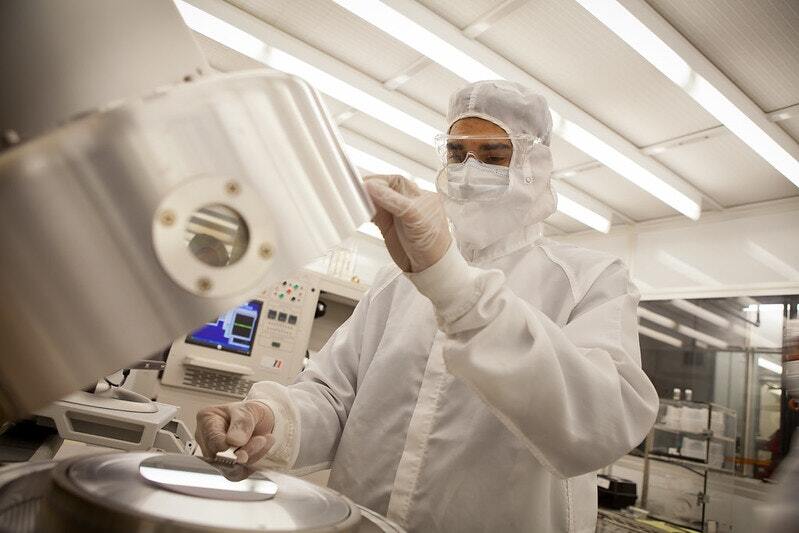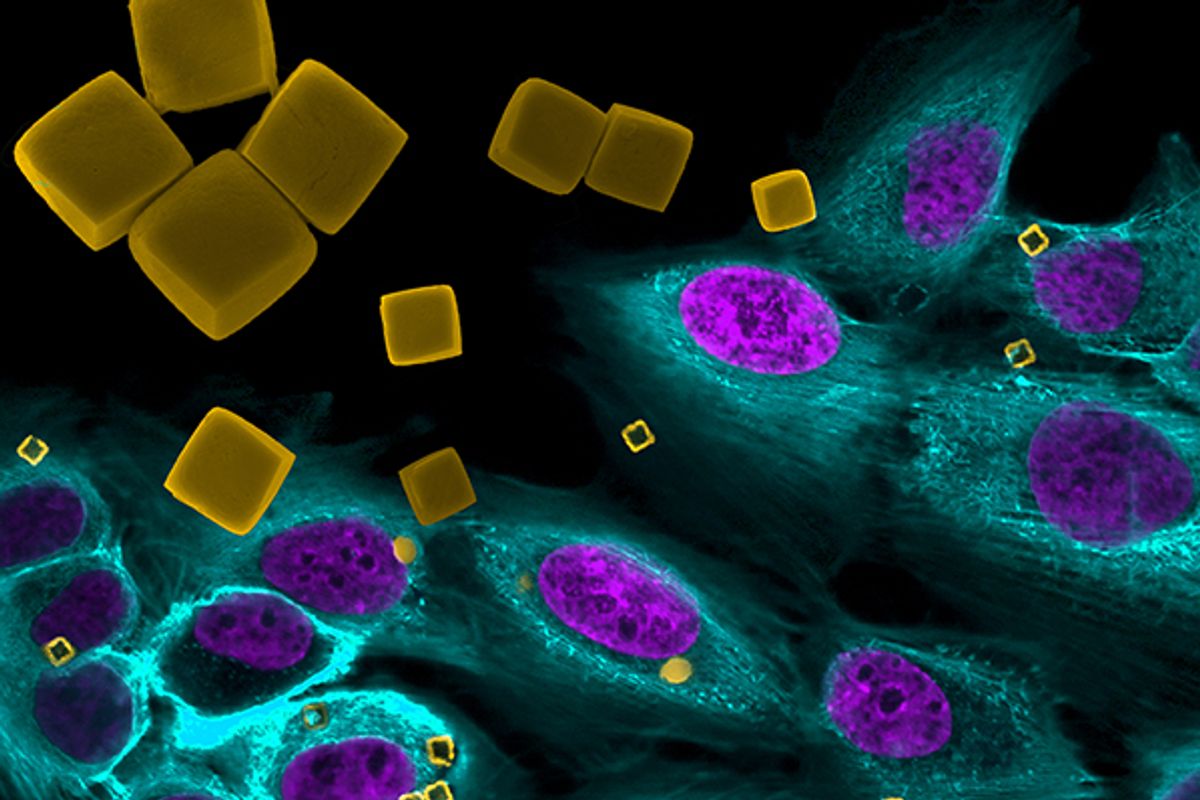PABLO GARCÍA-RUBIO | Tungsteno
Technological development has revolutionised medicine over the centuries through the development of devices, systems and techniques that have enabled the healthcare sector to progress from laboratories to operating theatres. In the last 50 years alone, there has been an enormous qualitative leap in diagnostic imaging techniques, precision surgery and access to and exchange of health information, saving thousands of lives and millions of euros for healthcare systems. Now one field of research promises to revolutionise the healthcare industry and pharmacology as part of the fourth industrial revolution: nanotechnology.
While some advances developed through the ability to manipulate materials at the nano-scale are already visible in sectors such as construction and textiles, a host of applications are being forged in laboratories around the world that are expected to see the light of day in the coming decades. Nanotechnology is set to radically change the way we diagnose, prevent and treat the most harmful pathologies, making medicine more precise, personalised and able to go where traditional processes have never managed to reach. As US entrepreneur and philanthropist Bernard Marcus, who has been involved in several nanotech projects, said, nanomedicine "is going to have a major impact on the survival of the human race, even greater than penicillin."

Nanobiosensors and contrast agents for more accurate diagnostics
Nanotechnological developments could access parts of our bodies at the molecular level to detect any changes more accurately and earlier. This could sometimes even be before the patient shows symptoms and the disease is detectable by the usual means of diagnostic imaging or the examination of biological samples.
In this respect, one of the most interesting applications is the use of nanobiosensors capable of detecting chemical or biological substances in tissues and fluids extracted from our body. These devices are made up of a biological receptor and a sensor composed of nanomaterials that transforms the response of the receptor into a detectable signal, so that the device can fluoresce or change its movement pattern when it comes into contact with a given substance.
In this way, viruses such as Zika and HIV have been detected. The commercial development of nanobiosensors is expected to provide a more accurate, cheaper and faster way of examining a sample compared to traditional techniques. In addition, their accuracy will be key to developing preventive tests that can detect deadly diseases at very early stages, increasing the chances of survival.
Three scientific institutions in the Valencian Community have collaborated with a private company in the development of a solution based on nanoparticles that increase the contrast in magnetic resonance images. Credit: CIBER-BBN.
Other advances are focused on optimising the processes currently in use. For example, contrast agents—the material that is administered prior to certain diagnostic imaging tests to highlight certain areas—have been developed using nanoparticles with magnetic or semiconductor properties that boost the potential of these procedures and increase the quality of the result in tests such as MRI or CT scans. These new contrast agents are already on the market, but their use, for the moment, is limited. "The contrast agents are very good, but they are much more difficult to use and the appropriate equipment is not available, so they end up on the shelf and we wind up using the same old ones," says Agustín Camónola , a researcher at the Institute of Nanoscience and Materials of Aragón.

Nanorobot surgeons, a hope against cancer
If there is one nanotechnological development that seems to be straight out of science fiction, it is that of nanorobots able to be introduced into the human body and moving to specific locations to solve problems on a cellular scale. As researcher Fernando Soto of the Canary Center at Stanford for Cancer Early Detection puts it, it's the closest thing to "swallowing your own doctor, guiding him where you want him to go and making him do certain operations."
These nanobots can be guided internally—using substances such as glucose as fuel—or externally through magnetic fields or ultrasound. Once at their destination, they could interact with pathogens or bacteria or even collect samples at a level that no surgical instrument could reach. This could lead to minimally invasive biopsies. Nanorobots have even been developed that are capable of piercing tissue to access regions hitherto inaccessible with traditional tools, such as intraocular tissues or certain parts of the brain.
But the greatest hope for the development of programmable nanodevices lies in localised drug delivery. Drugs can be introduced into our system through nanometric devices that are capable of locating certain cells and interacting within them. In this way, localised therapy could replace invasive therapies with harmful side effects that are used against some diseases, especially against the spread of tumours.
The ability to develop cancer therapies that include nano-sized elements will change the way we treat the disease. Credit: National Institute of Health.
Oncology is one of the fields that will benefit most from this novel form of drug delivery. Today's most commonly used cancer therapies are very effective against cancer cells, but highly toxic to the rest of our bodies. However, by selectively delivering the medication only to the affected cells, it is possible to administer higher doses of the drug without harming other healthy cells.
One technique that has been developed and tested in mice involves administering nanorobots that have been programmed to act on tumour cells. When they detect them, they release a clotting enzyme that causes intravascular thrombosis and prevents the cells from reproducing further. This is just one example of dozens of therapies that have been designed in laboratories to fight cancer more precisely and with less toxicity. This will be particularly relevant as cancer cases are expected to increase by more than 60% in the next two decades.

The main obstacles preventing their use in hospitals
Although all these applications of nanotechnology and nanoscience in the field of medicine and health are very promising, these advances have not yet been translated into real-life clinical treatments. Most of these developments have not even been tested in humans and are still in the experimental phase in animal models.
The main obstacle facing the industry is how to optimise the products so that they aren’t only safe, but are also effective to market and use on a large scale. So far these technologies have been successfully reproduced in laboratories, but the ultimate challenge is to develop biocompatible nanodevices that navigate our bodies without causing any secondary issues and without getting blocked by biological barriers or getting lost in nooks and crannies along the way. In other words, these devices must be able to do their job efficiently and be disposed of or retrieved without causing any discomfort.
Nanomedical approaches are expected to move out of the lab and into clinical application within the next few decades. Credit: Kevin Tong/UC Davis College of Engineering.
In addition to the nanomedicine sector facing a lack of regulation, existing safety and quality protocols make it difficult to approve therapies or drugs that include nanotechnology elements. The therapies that have been designed so far involve a very sensitive level of interaction with the body. But overall there are many risks that will have to be ironed out before any regulatory agency can review them.
Once these barriers are overcome, the safety of such therapies in humans is guaranteed, and there is sufficient health and commercial interest to apply them on a large scale, all these applications could become widespread. Nanotechnology aspires to be a powerful tool, both to mitigate some of the deadliest diseases, such as cancer, and to find a treatment for others for which there are currently no effective therapies, such as Alzheimer's disease or hearing loss.
· — —
Tungsteno is a journalism laboratory to scan the essence of innovation. Devised by Materia Publicaciones Científicas for Sacyr’s blog.
